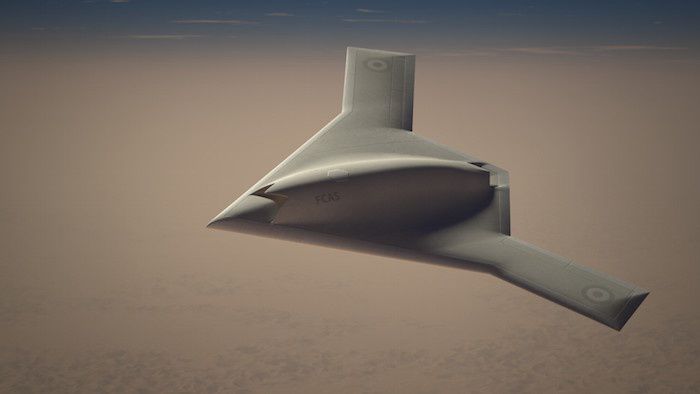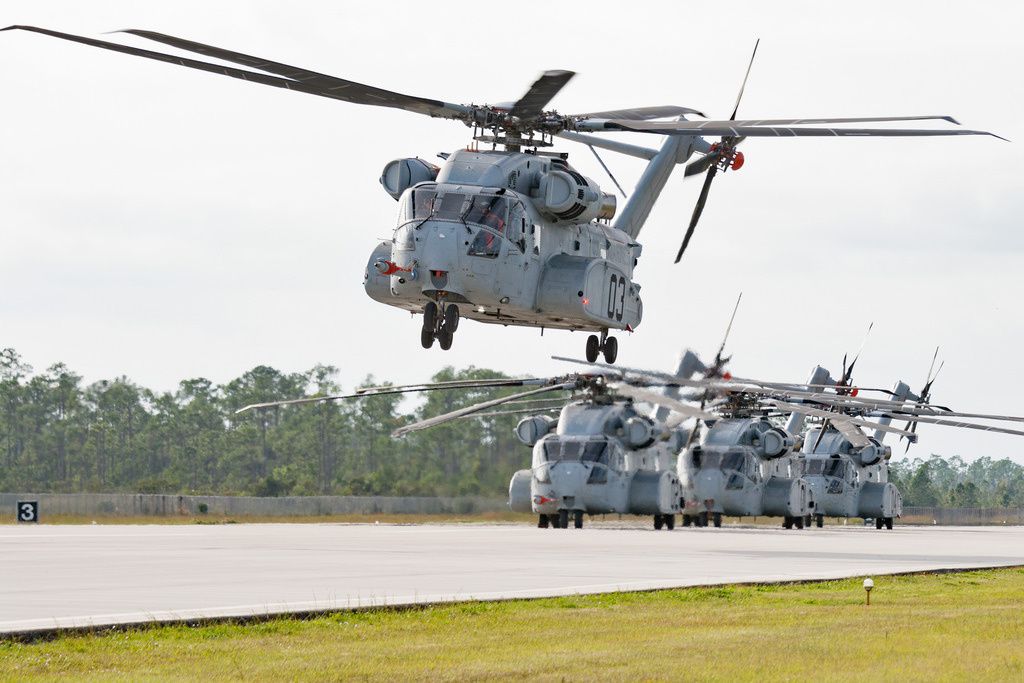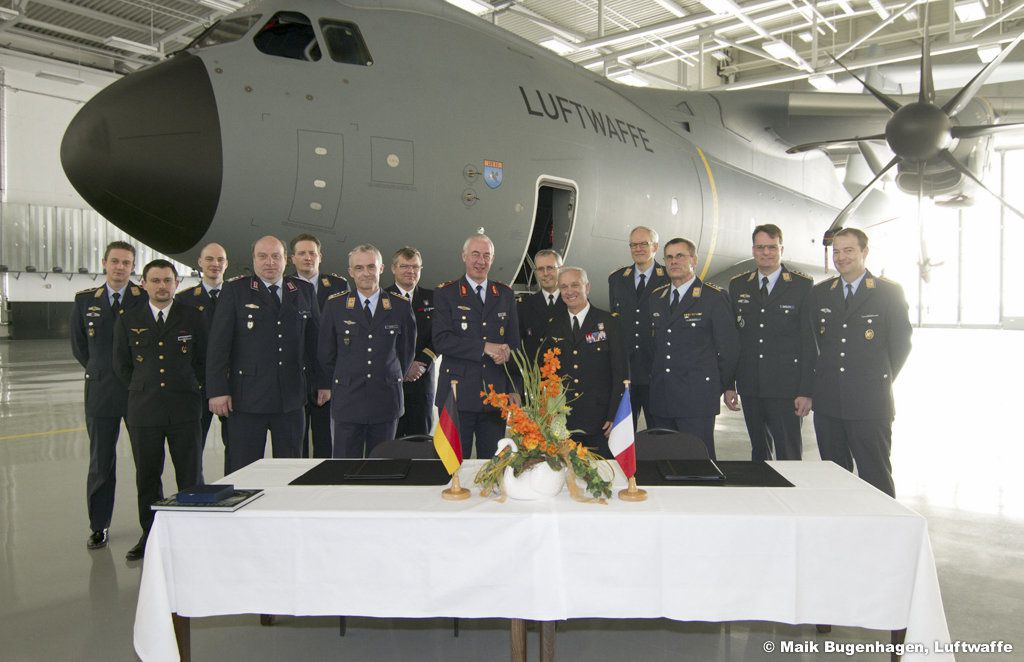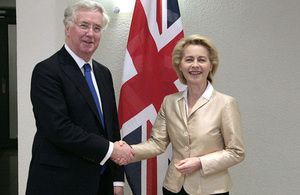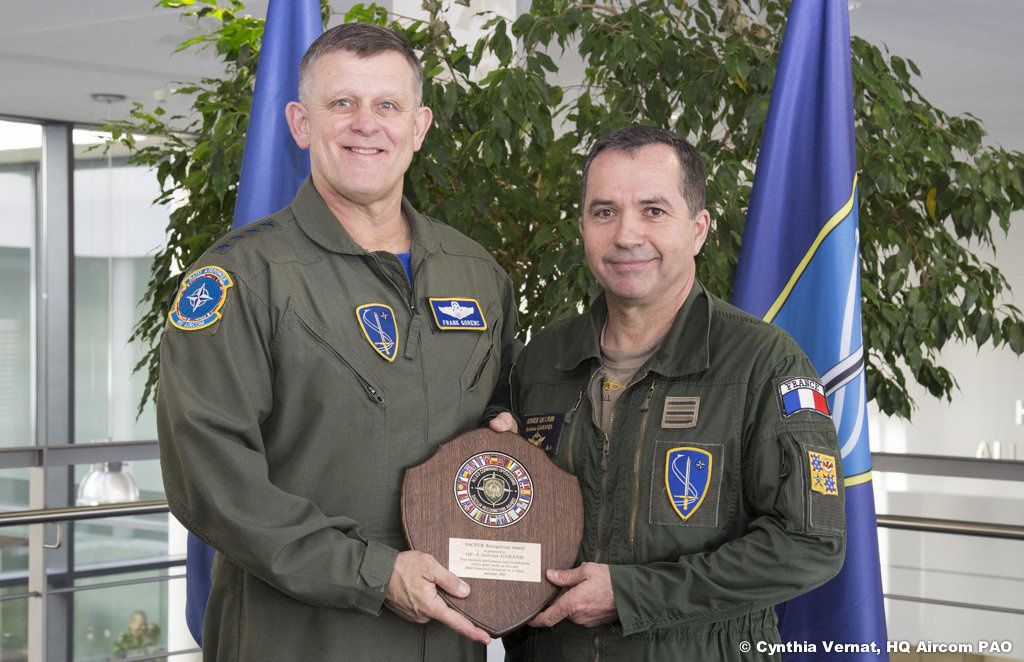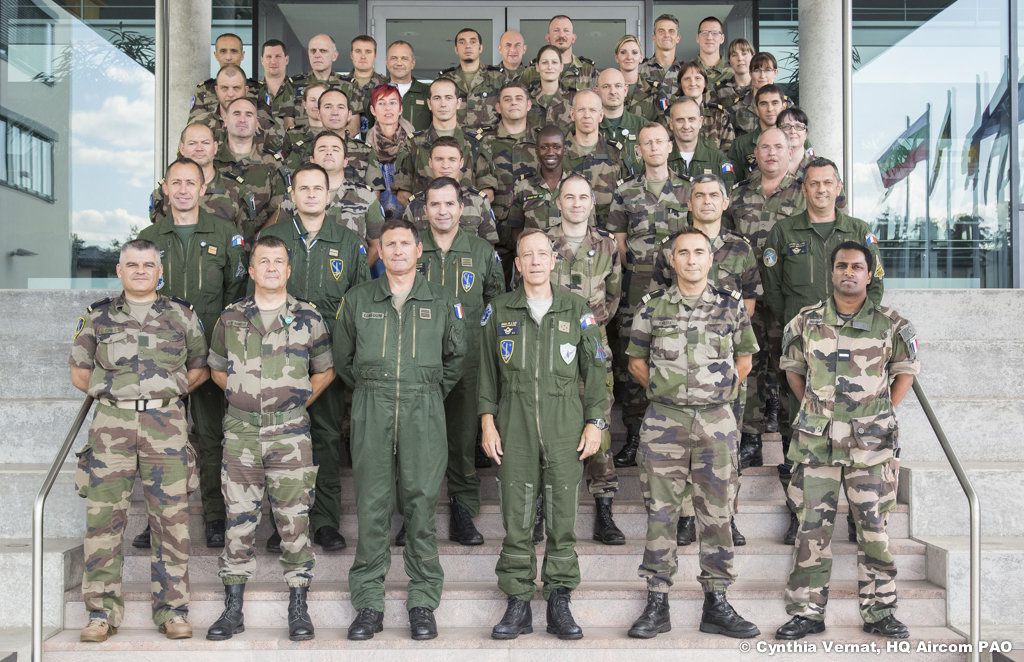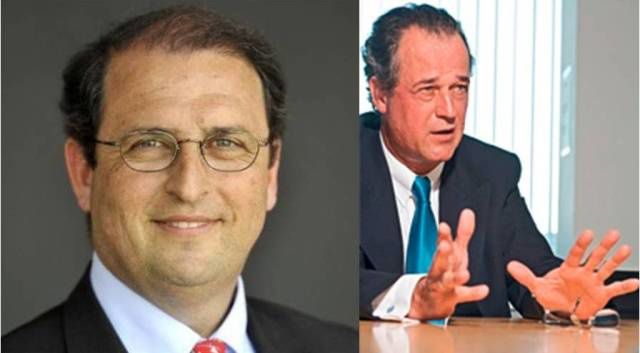Concept SCAF - Système de Combat Aérien Futur (ou FCAS, Future Combat Air System) - crédits Dassault Aviation
Berlin, 25 April 2018 Dassault Aviation
Dassault Aviation (stock exchange symbol: AM) and Airbus (stock exchange symbol: AIR) have decided to join forces for the development and production of Europe’s Future Combat Air System (FCAS), which is slated to complement and eventually replace current generation of Eurofighter and Rafale fighter aircraft between 2035 and 2040.
The partnership, sealed in Berlin by Eric Trappier, Chairman and CEO of Dassault Aviation and Dirk Hoke, Airbus Defence and Space Chief Executive Officer (CEO) , represents a landmark industrial agreement to secure European sovereignty and technological leadership in the military aviation sector for the coming decades.
Eric Trappier, Chairman and CEO of Dassault Aviation, said: “We are convinced that by deploying our joint expertise, Dassault Aviation and Airbus can best meet the operational requirements of the Forces in the development of this critically important European programme. Both companies fully intend to work together in the most pragmatic and efficient manner. Our joint roadmap will include proposals to develop demonstrators for the FCAS programme as of 2025. I am convinced that European sovereignty and strategic autonomy can and will only be ensured through independent European solutions. The vision that France and Germany have set forth with FCAS is a bold one and it’s an important signal in, and for, Europe. The FCAS programme will strengthen the political and military ties between Europe’s core nations and it will reinvigorate its aerospace industry.”
“Never before has Europe been more determined to safeguard and foster its political and industrial autonomy and sovereignty in the defence sector. Airbus and Dassault Aviation have absolutely the right expertise to lead the FCAS project. Both companies are already cooperating successfully on Europe’s medium altitude long endurance new generation drone programme,” said Dirk Hoke, CEO of Airbus Defence and Space.
“FCAS takes this successful cooperation to the next level and we are absolutely committed to tackling this challenging mission together with Dassault Aviation. The schedule is tight, so we need to start working together immediately by defining a joint roadmap on how best to meet the requirements and timelines to be set by the two nations. It is therefore of key importance that France and Germany launch an initial joint study this year to address this task.”
Dassault Aviation and Airbus Defence and Space agree on the importance of efficient industrial governance in military programmes. This also includes the involvement of other key European defence industrial players and nations based on government funding and on the principle of best contribution.
Overall, FCAS defines a system of systems combining a wide range of elements connected and operating together, including a next generation fighter aircraft together with Medium-Altitude Long-Endurance Unmanned Aerial Vehicles (UAVs), the existing fleet of aircraft (which will still operate beyond 2040), future cruise missiles and drones flying in swarms. The overall system will be interoperable and connected in a larger perimeter with mission aircraft, satellites, NATO systems and land and naval combat systems.
About Dassault Aviation
With over 10,000 military and civil aircraft delivered in more than 90 countries over the last century, Dassault Aviation has built up expertise recognized worldwide in the design, development, sale and support of all types of aircraft, ranging from the Rafale fighter, to the high-end Falcon family of business jets and military drones. In 2017, Dassault Aviation reported revenues of €4.8 billion. The company has 11,400 employees.
About Airbus
Airbus is a global leader in aeronautics, space and related services. In 2017 it generated reported revenues of € 67 billion – or
€ 59 billion restated for IFRS 15 – and employed a workforce of around 129,000. Airbus offers the most comprehensive range of passenger airliners from 100 to more than 600 seats. Airbus is also a European leader providing tanker, combat, transport and mission aircraft, as well as one of the world’s leading space companies. In helicopters, Airbus provides the most efficient civil and military rotorcraft solutions worldwide.


